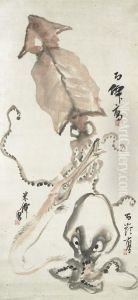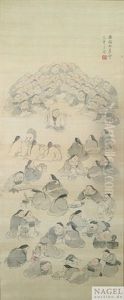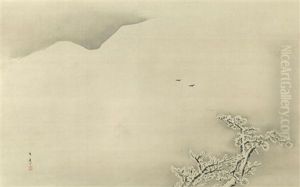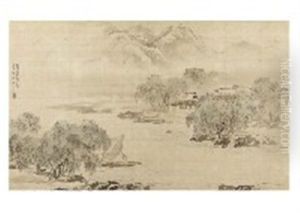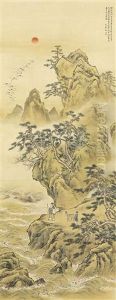Suzuki Hyakunen Paintings
Suzuki Hyakunen was a Japanese painter and calligrapher who lived during the late Edo and early Meiji periods. Born in 1825 in Kyoto, he was part of a cultural era that experienced significant political and social changes as Japan transitioned from the isolationist Edo period to the more open and modernizing Meiji era. Hyakunen was known for his skill in both the literati painting style (Nanga or Bunjinga) and the Maruyama-Shijo school of painting, which blended traditional Japanese techniques with Western realism.
During his lifetime, Hyakunen witnessed the end of the Tokugawa shogunate and the restoration of imperial rule, an event known as the Meiji Restoration, which began in 1868. These changes had a profound effect on the arts in Japan, as the new government encouraged the adoption of Western ideas and techniques. Despite these shifts, Hyakunen remained committed to traditional Japanese artistic principles, while also showing some openness to integrating Western perspectives into his work.
Hyakunen was not only a painter but also a teacher, passing on his knowledge to students and influencing the next generation of artists. His works often featured landscapes, flowers, and birds, executed with a delicate touch and attention to the expressive possibilities of ink and brushwork. His calligraphy was also highly regarded, characterized by its elegance and strength.
Suzuki Hyakunen died in 1891, leaving behind a legacy as a bridge between the traditional arts of the Edo period and the evolving cultural landscape of the Meiji era. His contributions to Japanese art were marked by his dedication to the craft and his ability to maintain the integrity of traditional styles while subtly adapting to the changing times.
